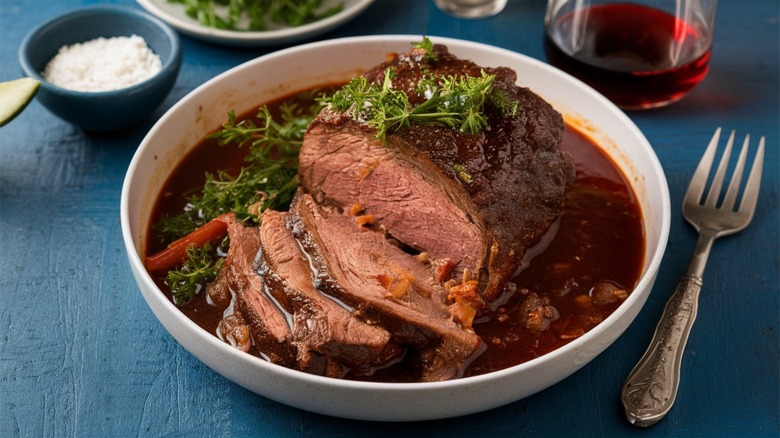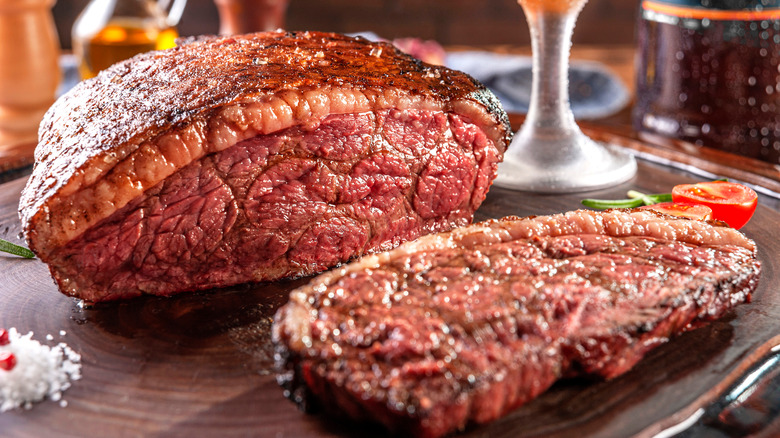Bring Your Dried-Out Rump Roast Back To Life With One Easy Trick
As one of the best cuts of meat for pot roast, a rump roast is a versatile meal option that you can also sear and cook in the oven. In either case, it's disappointing when the meat turns out to be dry, particularly when you have spent hours cooking it. Don't send it to the trash just yet, though. All is not lost because it's possible to salvage the meat with a simple liquid simmer, allowing the roast's fibers to reabsorb the stock.
If it's an oven-roasted meat, place it in a Dutch oven or braiser. If you're following a Sunday beef pot roast recipe, put the meat back in the slow cooker. No matter which method you choose, fill the pot with a meat or vegetable stock that complements the seasonings you used on the rump roast. You only need enough liquid to cover the meat about halfway.
Next, set the oven to 350 degrees Fahrenheit or the slow cooker to low. Only leave the roast in the oven or slow cooker long enough to soak up some of the liquid: You don't want to overcook it. After about an hour, test it with a fork. If it doesn't twist off easily, which indicates that it's tender, simmer it for a little longer. For safety, the U.S. Department of Agriculture recommends that beef roast reach an internal temperature of at least 145 degrees Fahrenheit, which you can check with a food thermometer.
Tips for keeping your rump roast moist
You can take a few steps to avoid simmering your rump roast if it's too dry. One step is to add enough liquid to the slow cooker or pot from the beginning. Use 2 cups of plain water and rely on the other seasonings and vegetables you add for flavor. Or, use a vegetable or meat broth or even wine for extra flavor. You could always try upgrading your pot roast with canned soup: Cream of mushroom especially adds moisture, a creamier texture, and another level of flavor.
The second step is to schedule plenty of time for your roast to cook. Rump roast is a lean cut of meat because it comes from a muscle group, so it has a lot of connective tissue. Because of that, a long roast on a low heat is best. So, schedule six to nine hours on low in a slow cooker or two to four hours at 350 degrees Fahrenheit in the oven for the muscle fibers to soften into natural gelatin, which contributes to the juiciness of the meat.
The last thing is to use the cover tip to keep the roast juicy and tender if you're cooking it in the oven. Usually, you want to leave the roast uncovered in the oven to brown on the exterior. If you're cooking more than 8 pounds of meat, though, loosely covering it with aluminum foil halfway through will keep it from getting dry and overcooked on the outside.

